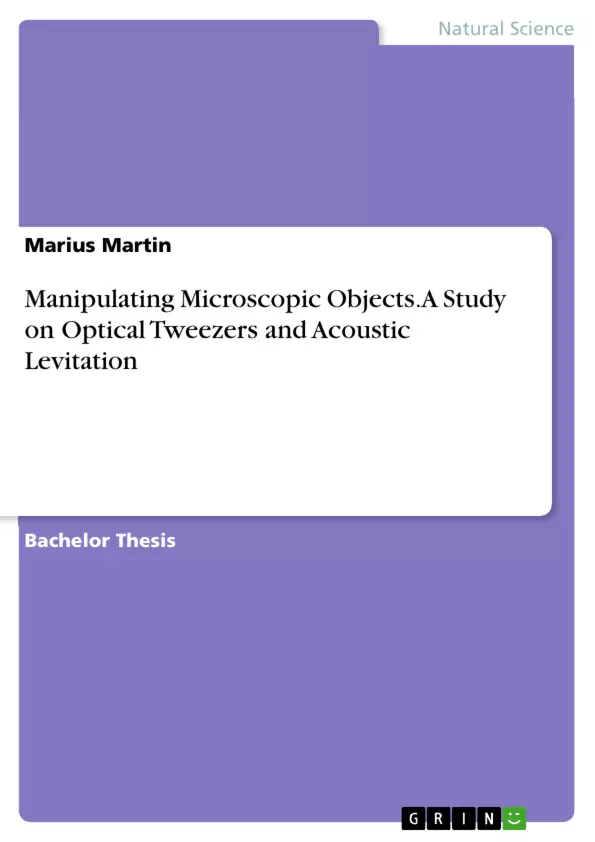This thesis investigates two powerful techniques for manipulating and studying microscopic particles: optical tweezers and acoustic levitation. Optical tweezers use the force of light to trap and manipulate small particles, while acoustic levitation uses sound waves to levitate particles in mid-air. The first part of the thesis focuses on the construction and optimization of an optical tweezers system. The system is build using high-powered laser, optics for focusing the laser beam, and a position detection and control system. the second part of this thesis explores the use of acoustic levitation for the manipulation of micro spheres. The acoustic levitation system is designed and constructed using 72 transducers. The system is characterized using measurements of the acoustic field and the resulting levitation forces. The levitation of micro spheres is demonstrated. This thesis would provide a detailed investigation of two powerful techniques for the manipulation of microscopic particles.
Inhaltsverzeichnis (Table of Contents)
- Abstract
- Introduction Optical tweezers
- Theory
- Construction of optical tweezers
- Method
- Analysis and Discussion
- Conclusion
- References
Zielsetzung und Themenschwerpunkte (Objectives and Key Themes)
This thesis presents a comprehensive study of two advanced techniques for manipulating microscopic particles: optical tweezers and acoustic levitation. It investigates the construction, optimization, and application of both techniques, with a focus on their use for studying and manipulating particles in various scientific fields.
- The principles and theory behind optical tweezers and acoustic levitation.
- The construction and optimization of optical tweezers systems.
- The application of optical tweezers for particle analysis and manipulation.
- The use of acoustic levitation for manipulating microspheres.
- The potential of these techniques for advancing scientific research and applications.
Zusammenfassung der Kapitel (Chapter Summaries)
- Introduction Optical tweezers: This chapter introduces the two techniques of optical tweezers and acoustic levitation, explaining their operating principles and applications in diverse scientific fields. It highlights the significance of these techniques for studying and manipulating microscopic objects.
- Theory: This chapter delves into the theoretical foundation of optical trapping, explaining how the forces exerted by light on small particles lead to trapping. It discusses the equations for calculating gradient and scattering forces, and emphasizes the importance of stiffness in optical trapping.
- Construction of optical tweezers: This chapter explores the construction of an optical tweezers system, outlining the essential components such as high-powered lasers, optics for focusing the laser beam, and a position detection and control system. It explains the role of each component and the considerations involved in choosing appropriate equipment.
- Method: This chapter presents various analytical approaches used to determine the stiffness of trapping, including potential analysis, auto-correlation (ACF) method, and power spectrum density (PSD) method. It discusses the advantages and limitations of each method and provides examples of their application in studies of optical trapping.
Schlüsselwörter (Keywords)
This thesis focuses on the manipulation of microscopic objects using optical tweezers and acoustic levitation. Key areas of investigation include the construction and optimization of optical tweezers systems, the application of optical trapping for particle analysis, and the use of acoustic levitation for manipulating microspheres. The study highlights the potential of these techniques for advancing scientific research in fields like physics, chemistry, biology, and engineering.
- Quote paper
- Marius Martin (Author), 2023, Manipulating Microscopic Objects. A Study on Optical Tweezers and Acoustic Levitation, Munich, GRIN Verlag, https://www.grin.com/document/1340498



